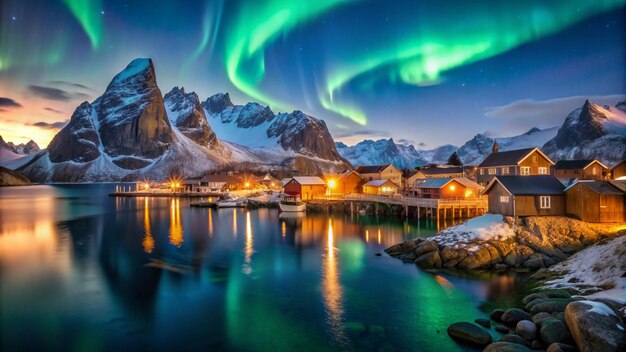
Visit of Sweden and Norway (Amazing view of Northern Lights from Both Countries)
Sweden
1.Stockholm
- Details: Sweden’s capital, spread across 14 islands connected by over 50 bridges. It’s known for its stunning archipelago, rich history, and vibrant cultural scene.
- Specialty:
- Special Dishes: Traditional dishes include meatballs (köttbullar) with lingonberry sauce and gravlax (cured salmon).
- Natural Produce: Abundant seafood and foraged berries.
- Festivals: Stockholm Culture Festival in August, Nobel Prize Ceremony in December.
2.Gothenburg
- Details: Sweden’s second-largest city, known for its picturesque canals, lively port, and innovative culinary scene.
- Specialty:
- Special Dishes: West Coast seafood, especially shrimp and fish dishes.
- Natural Produce: Fresh seafood, including shrimp and herring.
- Festivals: Gothenburg Film Festival in January, Liseberg Amusement Park’s seasonal events.
3.Gotland
- Details: A picturesque island known for its medieval architecture, sandy beaches, and unique limestone formations.
- Specialty:
- Special Dishes: Traditional Gotlandic dishes include saffranspannkaka (saffron pancake) and smoked lamb.
- Natural Produce: Saffron and local cheeses.
- Festivals: Medieval Week in August, which features medieval fairs and reenactments.
4.Kiruna
- Details: Located above the Arctic Circle, Kiruna is known for its spectacular Northern Lights, ice hotel, and Sami culture.
- Specialty:
- Special Dishes: Reindeer meat dishes, cloudberry jam.
- Natural Produce: Arctic berries and reindeer products.
- Festivals: Kiruna Snow Festival in January, Sami National Day on February 6th.
5.Uppsala
- Details: A historic city known for its university, botanical gardens, and medieval architecture.
- Specialty:
- Special Dishes: Traditional Swedish pastries and cakes from local bakeries.
- Natural Produce: Apples and local honey.
- Festivals: Uppsala International Guitar Festival in September, Uppsala Summer Festival.
Norway
1.Oslo
- Details: Norway’s capital, known for its modern architecture, vibrant cultural scene, and proximity to natural beauty.
- Specialty:
- Special Dishes: Rakfisk (fermented fish), brunost (brown cheese).
- Natural Produce: Fresh seafood and brown cheese.
- Festivals: Oslo Jazz Festival in August, Nobel Peace Prize Ceremony in December.
2.Bergen
- Details: A picturesque city surrounded by mountains and fjords, famous for its well-preserved wooden houses and the UNESCO World Heritage site, Bryggen.
- Specialty:
- Special Dishes: Bergen fish soup, klippfisk (dried cod).
- Natural Produce: Seafood, particularly cod and salmon.
- Festivals: Bergen International Festival in May/June, Bergen Festspillene (Bergen Festival).
3.Geirangerfjord
- Details: A stunning fjord known for its breathtaking views, waterfalls, and outdoor activities.
- Specialty:
- Special Dishes: Local fjord fish dishes.
- Natural Produce: Freshwater fish from the fjords.
- Festivals: Fjord Music Festival in July.
4.Tromsø
- Details: Known as the gateway to the Arctic, Tromsø offers spectacular views of the Northern Lights and a vibrant Arctic culture.
- Specialty:
- Special Dishes: Arctic cuisine including reindeer and whale meat.
- Natural Produce: Arctic berries and seafood.
- Festivals: Tromsø International Film Festival in January, Northern Lights Festival.
5.Lofoten Islands
- Details: An archipelago famous for its dramatic landscapes, fishing villages, and outdoor activities.
- Specialty:
- Special Dishes: Stockfish (dried cod) and local seafood.
- Natural Produce: Fresh fish and traditional fish dishes.
- Festivals: Lofoten International Chamber Music Festival in July, Lofoten Viking Festival.
These sites offer a rich blend of cultural experiences, natural beauty, and local traditions, making them ideal destinations for international tourists exploring Sweden and Norway.
Northern Lights Viewing in Sweden and Norway
Sweden
1. Abisko National Park
- Location: Far northern Sweden, in the province of Lapland.
- Details: Abisko is renowned for its clear skies and minimal light pollution, making it one of the best places in the world to view the Northern Lights.
- Specialty:
- Aurora Viewing: The park’s location on a rain shadow area means it has some of the most reliable clear skies in the region.
- Activities: Dog sledding, snowshoeing, and cross-country skiing.
- Best Time to Visit: Late September to March.
2. Kiruna
- Location: The northernmost town in Sweden, located in Lapland.
- Details: Kiruna offers excellent opportunities to view the Northern Lights, with various tours available that combine aurora viewing with Sami cultural experiences.
- Specialty:
- Aurora Viewing: The town is far enough north to experience frequent auroras, and local guides offer tailored Northern Lights tours.
- Activities: Visit the Icehotel, Sami cultural tours, and snowmobile safaris.
- Best Time to Visit: October to March.
3. Jokkmokk
- Location: Northern Sweden, about 150 km north of the Arctic Circle.
- Details: Known for its Sami culture and remote wilderness, Jokkmokk provides a great setting for aurora viewing with less light pollution.
- Specialty:
- Aurora Viewing: Offers a more rural setting with minimal light interference.
- Activities: Sami cultural experiences, winter festivals, and snow activities.
- Best Time to Visit: December to February.
Norway
1. Tromsø
- Location: Northern Norway, above the Arctic Circle.
- Details: Tromsø is one of the most popular places to view the Northern Lights in Norway due to its accessibility and high latitude.
- Specialty:
- Aurora Viewing: Offers a range of tours and activities, including Northern Lights chases and cruises.
- Activities: Arctic wildlife safaris, whale watching, and visiting the Arctic Cathedral.
- Best Time to Visit: September to April.
2. Alta
- Location: Northern Norway, in the Finnmark region.
- Details: Alta is known for its stable weather conditions and frequent auroral displays, making it another prime location for Northern Lights viewing.
- Specialty:
- Aurora Viewing: The Alta Aurora Observatory offers educational experiences and guided viewing tours.
- Activities: Visit the Alta Museum, Sami cultural experiences, and snow sports.
- Best Time to Visit: October to March.
3. Lofoten Islands
- Location: North of the Arctic Circle, in northern Norway.
- Details: The Lofoten Islands offer dramatic landscapes and excellent Northern Lights viewing opportunities with the added beauty of fjords and rugged coastlines.
- Specialty:
- Aurora Viewing: The islands’ remote location provides minimal light pollution and stunning auroral displays.
- Activities: Fishing villages, hiking, and scenic drives.
- Best Time to Visit: September to April.
4. Svalbard
- Location: An archipelago halfway between mainland Norway and the North Pole.
- Details: Svalbard is one of the northernmost inhabited places on Earth, providing unique opportunities to see the Northern Lights, especially during the Polar Night.
- Specialty:
- Aurora Viewing: Offers a unique setting with the possibility of viewing the aurora during the Polar Night (from late October to mid-February).
- Activities: Ice cave explorations, Arctic wildlife safaris, and snowmobiling.
- Best Time to Visit: October to February.
Tips for Northern Lights Viewing
- Check the Forecast: Use aurora forecasting apps or websites to check for optimal viewing conditions.
- Dress Warmly: Temperatures can be extremely cold, so layered, thermal clothing is essential.
- Stay in a Remote Location: The further from city lights, the better the viewing conditions.
- Be Patient: The Northern Lights can be unpredictable; it’s best to plan several nights of aurora hunting.
Both Sweden and Norway offer spectacular Northern Lights experiences with a range of activities and scenic backdrops to enhance the magical experience.
10-Day Sweden and Norway Itinerary with Northern Lights Viewing
Day 1: Arrival in Stockholm, Sweden
- Arrival: Stockholm Arlanda Airport (ARN)
- Travel to Accommodation:
- Distance: Stockholm Arlanda Airport to Stockholm City Center – ~40 km
- Mode of Travel: Taxi or train
- Travel Time: ~40 minutes by taxi or ~20 minutes by train
- Accommodation Options in Stockholm:
- Elite: Grand Hotel Stockholm
- Medium: Hotel Skeppsholmen
- Economy: Generator Stockholm
- Activities: Explore Gamla Stan (Old Town), visit the Vasa Museum, and stroll along the waterfront.
Day 2: Stockholm to Kiruna
- Travel to Kiruna:
- Distance: Stockholm to Kiruna – ~1,300 km
- Mode of Travel: Flight
- Travel Time: ~2 hours (direct flight)
- Accommodation Options in Kiruna:
- Elite: Icehotel
- Medium: Camp Ripan
- Economy: STF Kiruna City Hostel
- Activities: Explore Kiruna Church, visit the Icehotel, and evening Northern Lights tour.
Day 3: Kiruna to Abisko National Park
- Travel to Abisko:
- Distance: Kiruna to Abisko – ~100 km
- Mode of Travel: Train or taxi
- Travel Time: ~1.5 hours by train or ~1.5 hours by taxi
- Accommodation Options in Abisko:
- Elite: Abisko Turiststation
- Medium: Abisko Mountain Lodge
- Economy: Abisko Hostel
- Activities: Northern Lights viewing at the Aurora Sky Station, explore the national park, and engage in winter activities.
Day 4: Abisko to Tromsø, Norway
- Travel to Tromsø:
- Distance: Abisko to Tromsø – ~250 km (with transfers)
- Mode of Travel: Train to Narvik + flight to Tromsø
- Travel Time: ~4 hours (train + flight)
- Accommodation Options in Tromsø:
- Elite: Radisson Blu Hotel Tromsø
- Medium: Scandic Ishavshotel
- Economy: Tromsø Bed & Books
- Activities: Explore Tromsø city, visit the Arctic Cathedral, and evening Northern Lights tour.
Day 5: Tromsø
- Activities:
- Daytime: Visit the Polar Museum, Tromsø Bridge, and take a Fjord Cruise.
- Evening: Northern Lights chasing tour or visit a Sami reindeer camp.
Day 6: Tromsø to Alta
- Travel to Alta:
- Distance: Tromsø to Alta – ~300 km
- Mode of Travel: Flight
- Travel Time: ~40 minutes
- Accommodation Options in Alta:
- Elite: Sorrisniva Igloo Hotel
- Medium: Thon Hotel Alta
- Economy: Alta River Camping
- Activities: Visit the Alta Museum, explore the Northern Lights Cathedral, and evening Northern Lights tour.
Day 7: Alta to Lofoten Islands
- Travel to Lofoten:
- Distance: Alta to Svolvær (Lofoten) – ~500 km (with transfers)
- Mode of Travel: Flight to Bodø + ferry to Svolvær
- Travel Time: ~3 hours (flight + ferry)
- Accommodation Options in Lofoten:
- Elite: Svinøya Rorbuer
- Medium: Lofoten SuiteHotel
- Economy: Lofoten Vandrerhjem
- Activities: Explore picturesque fishing villages, hike in the Lofoten Islands, and evening Northern Lights viewing.
Day 8: Lofoten Islands to Svalbard
- Travel to Svalbard:
- Distance: Lofoten to Longyearbyen (Svalbard) – ~1,200 km (with transfers)
- Mode of Travel: Flight
- Travel Time: ~3 hours (direct flight)
- Accommodation Options in Svalbard:
- Elite: Radisson Blu Polar Hotel
- Medium: Svalbard Hotel
- Economy: Svalbard Hostel
- Activities: Explore Longyearbyen, visit the Svalbard Museum, and enjoy Arctic wildlife tours.
Day 9: Svalbard
- Activities:
- Daytime: Ice cave tours, snowmobile safaris, and dog sledding.
- Evening: Northern Lights viewing in the Polar Night, with guided tours available.
Day 10: Svalbard to Oslo
- Travel to Oslo:
- Distance: Svalbard to Oslo – ~1,600 km (with transfers)
- Mode of Travel: Flight
- Travel Time: ~4 hours (direct flight)
- Accommodation Options in Oslo:
- Elite: The Thief Hotel
- Medium: Radisson Blu Plaza Hotel
- Economy: Anker Hostel
- Activities: Explore the Oslo Opera House, visit the Viking Ship Museum, and stroll through the city’s parks and streets.
Summary of Travel Distances and Times:
- Stockholm to Kiruna: ~1,300 km, ~2 hours by flight
- Kiruna to Abisko: ~100 km, ~1.5 hours by train/taxi
- Abisko to Tromsø: ~250 km, ~4 hours by train + flight
- Tromsø to Alta: ~300 km, ~40 minutes by flight
- Alta to Lofoten: ~500 km, ~3 hours by flight + ferry
- Lofoten to Svalbard: ~1,200 km, ~3 hours by flight
- Svalbard to Oslo: ~1,600 km, ~4 hours by flight
Best Seasons to Visit Sweden and Norway
Sweden
- Spring (March to May):
- Why Visit: Mild temperatures, blooming flowers, and longer daylight hours. Ideal for exploring cities and enjoying outdoor activities as nature awakens.
- Average Temperature: 0-15°C (32-59°F)
- Packing:
- Light layers (sweaters, long-sleeve shirts).
- Medium-weight jacket.
- Comfortable walking shoes.
- Umbrella or rain jacket for occasional showers.
- Summer (June to August):
- Why Visit: Warm temperatures, midnight sun in the north, and numerous festivals and outdoor activities. Great for experiencing Sweden’s beautiful landscapes and vibrant city life.
- Average Temperature: 15-25°C (59-77°F)
- Packing:
- Lightweight, breathable clothing.
- Sunscreen, sunglasses, and a hat.
- Comfortable walking shoes.
- Light jacket or sweater for cooler evenings.
- Fall (September to November):
- Why Visit: Crisp air, colorful autumn foliage, and fewer tourists. Perfect for hiking and enjoying Sweden’s natural beauty.
- Average Temperature: 5-15°C (41-59°F)
- Packing:
- Layers for varying temperatures.
- Warm jacket for cooler evenings.
- Comfortable walking shoes.
- Rain jacket or umbrella.
- Winter (December to February):
- Why Visit: Ideal for winter sports, Christmas markets, and seeing the Northern Lights in the north. Cozy atmosphere in cities and snow-covered landscapes.
- Average Temperature: -10 to 0°C (14-32°F)
- Packing:
- Warm clothing (coat, sweaters, thermal wear).
- Hats, gloves, scarves, and insulated boots.
- Layers for indoor and outdoor settings.
Norway
- Spring (March to May):
- Why Visit: Warming temperatures, blooming flowers, and fewer tourists. Ideal for enjoying Norway’s natural beauty and exploring cities.
- Average Temperature: 0-15°C (32-59°F)
- Packing:
- Light layers (sweaters, long-sleeve shirts).
- Medium-weight jacket.
- Comfortable walking shoes.
- Umbrella or rain jacket.
- Summer (June to August):
- Why Visit: Long daylight hours, midnight sun in the north, and perfect weather for outdoor activities. Great for exploring fjords, hiking, and enjoying cultural festivals.
- Average Temperature: 10-20°C (50-68°F)
- Packing:
- Lightweight, breathable clothing.
- Sunscreen, sunglasses, and a hat.
- Comfortable walking shoes.
- Light jacket or sweater for cooler evenings.
- Fall (September to November):
- Why Visit: Stunning autumn colors, crisp air, and fewer tourists. Ideal for hiking and exploring the fjords with beautiful fall foliage.
- Average Temperature: 5-15°C (41-59°F)
- Packing:
- Layers for varying temperatures.
- Warm jacket for cooler evenings.
- Comfortable walking shoes.
- Rain jacket or umbrella.
- Winter (December to February):
- Why Visit: Ideal for winter sports, Christmas markets, and Northern Lights viewing. Enjoy cozy lodges and snow-covered landscapes.
- Average Temperature: -10 to 0°C (14-32°F)
- Packing:
- Warm clothing (coat, sweaters, thermal wear).
- Hats, gloves, scarves, and insulated boots.
- Layers for indoor and outdoor settings.
How to Travel to Switzerland from Various Parts of the World
From North America (USA, Canada):
- Air Travel:
- Direct Flights: Available to major Swiss cities like Zurich (ZRH) and Geneva (GVA) from cities such as New York, Los Angeles, and Toronto.
- Airlines: Swiss International Air Lines, United Airlines, American Airlines, Air Canada.
- Travel Time: Approximately 7-10 hours depending on the departure city.
From Europe:
- Air Travel:
- Direct Flights: Numerous budget and major airlines offer flights to Switzerland from various European cities.
- Airlines: EasyJet, Ryanair, Lufthansa, Swiss International Air Lines.
- Travel Time: Typically 1-2 hours from neighboring countries like France, Italy, and Germany.
From Asia:
- Air Travel:
- Direct Flights: Available from major Asian cities like Beijing, Tokyo, and Mumbai.
- Airlines: Swiss International Air Lines, Emirates, Qatar Airways.
- Travel Time: Approximately 10-12 hours from major Asian hubs.
From Australia:
- Air Travel:
- Direct Flights: Limited; most routes include stopovers in Asia or the Middle East.
- Airlines: Qantas, Emirates, Qatar Airways.
- Travel Time: Approximately 22-24 hours with stopovers.
Visa Requirements for Switzerland
- Schengen Visa:
- Switzerland is part of the Schengen Area, so a Schengen visa is required for many international travelers.
- Who Needs It:
- Citizens from non-EU/EFTA countries (e.g., USA, Canada, Australia, India, Pakistan) typically need a Schengen visa for short stays (up to 90 days).
- Application Process:
- Visa Application Form: Complete the Schengen visa application form.
- Passport Validity: Passport should be valid for at least three months beyond your planned departure date and have at least two blank pages.
- Photos: Recent passport-sized photos.
- Travel Insurance: Proof of travel medical insurance covering at least €30,000.
- Accommodation: Proof of accommodation bookings for the entire stay in Switzerland.
- Financial Proof: Evidence of sufficient funds for the duration of your stay (e.g., bank statements, pay slips).
- Flight Itinerary: Details of your flight bookings.
- Visa Fee: Payment of the visa processing fee.
- Processing Time:
- Typically about 15 calendar days, but it can vary. Apply well in advance of your travel date.
- Visa-Free Entry:
- Countries: Citizens of some countries, including the USA, Canada, Australia, and several EU countries, can enter Switzerland visa-free for short stays (up to 90 days).
- Requirements: Ensure your passport is valid for at least six months beyond your planned departure date.
By planning your trip according to the best season and preparing the necessary travel documents, you can ensure a smooth and enjoyable visit to Switzerland.
Visa Requirements for Switzerland
Traveling from Pakistan to Switzerland
. Travel Details:
- Flights:
- Direct Flights: Currently, there are no direct flights from Pakistan to Switzerland. Travelers usually connect through major European or Middle Eastern hubs.
- Major Airlines: Qatar Airways, Emirates, Turkish Airlines, and Etihad Airways offer connecting flights from cities like Islamabad, Karachi, and Lahore to major Swiss cities such as Zurich (ZRH), Geneva (GVA), and Basel (BSL).
- Total Travel Time: Approximately 12-18 hours, depending on layovers.
- Booking Tips:
- Book flights well in advance to secure the best rates and ensure availability.
- Check for any travel advisories or entry restrictions.
2. Visa Requirements:
- Schengen Visa:
- Who Needs It: Pakistani citizens require a Schengen visa to visit Switzerland. Switzerland is part of the Schengen Area, which allows travel to other Schengen countries as well.
- Application Process:
- Visa Application Form: Complete the Schengen visa application form.
- Passport Validity: Passport should be valid for at least three months beyond your planned departure date and have at least two blank pages.
- Photos: Recent passport-sized photos.
- Travel Insurance: Proof of travel medical insurance covering at least €30,000.
- Accommodation: Proof of accommodation bookings for the entire stay in Switzerland.
- Financial Proof: Evidence of sufficient funds for the duration of your stay (e.g., bank statements, pay slips).
- Flight Itinerary: Details of your flight bookings.
- Visa Fee: Payment of the visa processing fee.
- Processing Time: Typically about 15 calendar days, but it can vary. Apply well in advance of your travel date.
Traveling from India to Switzerland
. Travel Details:
- Flights:
- Direct Flights: Available from major Indian cities such as Delhi, Mumbai, and Bengaluru.
- Major Airlines: Air India, Swiss International Air Lines, and Lufthansa offer direct flights to Zurich (ZRH) and Geneva (GVA). Connecting flights are also available via airlines such as Emirates, Qatar Airways, and Turkish Airlines.
- Total Travel Time: Direct flights take approximately 8-9 hours, while connecting flights may take around 12-18 hours, depending on layovers.
- Booking Tips:
- Direct flights are more convenient but can be more expensive. Connecting flights may be more economical but can involve longer travel times.
- Check for current travel advisories and entry restrictions.
2. Visa Requirements:
- Schengen Visa:
- Who Needs It: Indian citizens need a Schengen visa to visit Switzerland. The process is similar to that for Pakistani travelers.
- Application Process:
- Visa Application Form: Complete the Schengen visa application form.
- Passport Validity: Passport should be valid for at least three months beyond your planned departure date and have at least two blank pages.
- Photos: Recent passport-sized photos.
- Travel Insurance: Proof of travel medical insurance covering at least €30,000.
- Accommodation: Proof of accommodation bookings for the entire stay in Switzerland.
- Financial Proof: Evidence of sufficient funds for the duration of your stay (e.g., bank statements, pay slips).
- Flight Itinerary: Details of your flight bookings.
- Visa Fee: Payment of the visa processing fee.
- Processing Time: Typically about 15 calendar days, but it can vary. Apply well in advance of your planned travel date.
General Tips for Both Countries:
- Travel Insurance: Ensure you have comprehensive travel insurance covering health, accidents, and trip cancellations.
- Currency: The currency in Switzerland is the Swiss Franc (CHF). Carry some cash and have a credit or debit card for convenience.
- Travel Advisory: Check for any travel advisories or restrictions that might affect your trip, including health and safety guidelines.
By understanding these travel details and visa requirements, you can better plan your trip to Switzerland and ensure a smooth and enjoyable experience.
Top of Form
Bottom of Form




